How to get your first pull-up
If you’ve seen those videos of girls on the tube/overground smashing out a few casual pull ups on their commute, and you thought that was super cool, this blog is for you! Today we talk pull-ups, chin-ups, how to get your first one, how long it will take, and more. Let’s go!
The pull-up is an advanced exercise that requires some serious strength not only in your back muscles, but also your core and biceps. Specifically, you’ll need all these to be strong af - lats, traps, rhomboids, biceps, delts and core. On top, you also need to perfect the movement pattern of the pullup and get all these muscles to work together so you can get that chin over the bar. So, while it’s not an easy feat, it is definitely achievable as long as you have enough patience - and put the hours in! 😉
Why do they gotta be so bloody difficult?
First things first, let’s talk about why this is an advanced exercise. In simple terms, you have to be able to pull your entire bodyweight. Let that sink it. That’s not a 5kg dumbbell, or a 16kg kettlebell, or even a barbell. We want you to imagine how many plates you will need to put on the barbell for it to weigh as much as your entire body. Unless you have been lifting for a while, chances are you don’t ever lift that much, not even for your deadlifts or squats. Now, add on top how small your back muscles are compared to those big quads, hammies, and glutes, and you’ll be able to appreciate why pull-ups are so bloody difficult!
How long will it take?
It’s impossible to provide you with a timeline - everyBODY is different. Given that you are working with your bodyweight, there’s a ratio between your bodyweight and strength that is also a factor here. You might be really strong - but you might weigh a lot, making it more difficult to pull yourself over the bar. You get the gist. However, with the right programme, nutrition and rest - for someone who is a complete beginner - assuming no injuries - it could take anywhere between 6 months and 12 months of consistent strength training at least 3 times a week. Not to be discouraged though! Remember that the journey is more important than the destination, and you’ll learn so much along the way - and have loads and loads a fun, which will only make getting that first pull-up even more rewarding.
What should I be doing?
First and foremost, you need a programme! Doing random exercises in no particular order - with no progression - will only leave you frustrated and fatigued. Your programme should definitely incorporate 1/ progressive overload - challenging the muscles with more weight, reps, sets or tempo week-on-week 2/ enough protein for recovery and 3/ enough rest. That being said, here are our fave exercises to train for that first pull-up:
1. Well, pull-ups: no better way to train for something than…doing it. Do them assisted with bands, do them on the assisted pull-up machine - do them however you want, but it’s crucial that you do practice a pull-up variation so your body can get used to the movement pattern!
2. Inverted rows: we love this one as it allows you to get your chin over the bar - without any assistance. The beauty of this exercise is that it allows you to play around with how much bodyweight you are using, so you can progress or regress it accordingly.
3. Deadhangs: often overlooked, your grip strength is actually crucial when it comes to pull-ups. After all, the first step to being able to pull yourself over the bar is to be able to hang from the bar. So, prepare to get some calluses and get yourself hanging from that bar for as long as you can! Practice these in sets of 3-4 just as you’d do with any other exercise.
4. Unilateral work: our right and our left side are never exactly the same, there are always some sort of small imbalances. The only way to fix this is through unilateral exercises, ie. exercises in which each side performs a full working set independently. A few of our faves here are single arm lat pulldowns, single arm dumbbell rows, single arm seated row, alternating bicep curls.
5. Negative pull-ups: this is when you start at the top of the movement - your chin over the bar already (you can jump or use a plyo box to get yourself up there). From there, you are going to lower yourself all the way down to hanging with a lot of control - think 2-3s on the way down. These are an excellent way to build strength in the eccentric (lowering - or this is also when the muscle lengthens) phase of the pull-up and getting the body accustomed to the load.
If you’re not sure where to start with your pull-up journey and you’d prefer some face to face support and guidance - make sure you’re on our waitlist to join and become a member! Sign up here.


